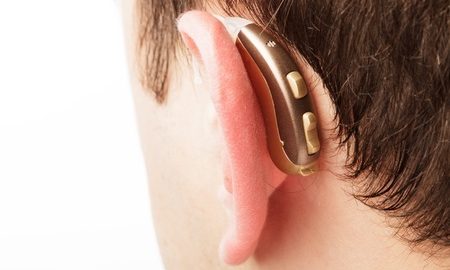Scientists on the Brink of Curing Hereditary Deafness

Hereditary deafness is passed on from parent to child. People born with this condition have a complete inability to hear on account of faulty cells in the inner ear. Currently, the only treatment for hereditary deafness is an artificial cochlear implant. Now, scientists have succeeded in growing healthy, functional human cochlear cells from stem cells, putting them on the brink of curing hereditary deafness.
The Science of Hearing
The cochlea is a spiral cavity in the inner ear. Each cochlea contains about 11,000 hair cells vital to converting sound vibrations into impulses. These impulses are transmitted by the auditory nerve to the brain which perceives them as sound. Therefore, the cochlea is vital to our ability to hear.
In some people, the cochlear hair cells have undergone a genetic mutation and are faulty, leading to severe hearing loss or deafness. Currently, the only treatment for hereditary deafness is a cochlear implant, a type of hearing aid that transfers sound vibrations from the cochlea to the auditory nerve. These sensory signals are then transmitted by the auditory nerve to the brain.
Stem Cells
Stem cells are progenitor cells that can morph into other types of specialized cells. They can be likened to a lump of clay that can be molded into any shape. A rapidly growing human embryo contains millions of stem cells that form the different types of cells needed to grow the various organs before birth.
In adults, stem cells are used to repair and replace tissue that has aged or is injured or diseased. Stem cells have been the focus of medical research for many decades because they offer endless possibilities to cure human diseases.
Hereditary Deafness Research
Researchers in Japan have succeeded in engineering stem cells that don’t carry the genetic mutation which leads to hereditary deafness. They plan to surgically implant these stem cells into the cochlea of affected patients, where it is hoped they will function like normal inner ear hair cells. According to lead researcher Professor Kazusaku Kamiya at Juntendo University in Tokyo, this work will hopefully lead to a cure of one form of hereditary deafness. “We have succeeded in making cochlear stem cells. We now need to find a safe way to inject them into the patient’s ear,” he says. The therapy is expected to be available in the next 5 to 10 years.
The stem cells engineered by the Japanese team are free of the Gap Junction Beta 2 mutation, which accounts for hearing loss or genetic deafness in 1 in every 1000 children and 50 percent of faulty cochlear cells in some parts of the world.
Age-Related Deafness
In addition to hereditary deafness, hearing loss can also occur as the body ages. Roughly 33 percent of people above the age of 65 have some degree of hearing loss, and this number rises to 50 percent for people 75 and older. This slowly progressive hearing loss is due to the death of cochlear hair cells from exposure to noise, for example.
Dr. Sarah Boddy and her team at the University of Sheffield in the United Kingdom have been investigating potential ways of reversing age-related hearing loss. Their research has shown that stem cells obtained from human bone marrow can be converted into inner ear cells in the laboratory. This could pave the way for a treatment for hearing loss, for which there is currently no cure.
References:
- http://www.dailymail.co.uk/sciencetech/article-3956674/Can-deafness-cured-using-stem-cells-Treatment-allow-people-hear-ready-10-years.html


